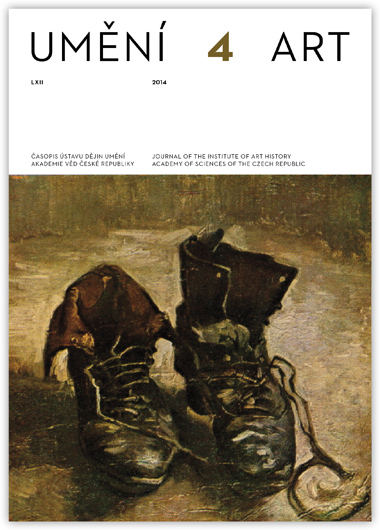Jan Zachariáš
Vincent van Gogh´s A Pair of Shoes: An Attempt at an Interpretation
This study suggests a number of new interpretations of van Gogh's work A Pair of Shoes. This new reading of the painting also discusses the dispute over interpretation that took place between Martin Heidegger, Meyer Schapiro and Jacques Derrida. Van Gogh painted the work during his stay in Paris, evidently in 1886. In the second half of the 19th century ordinary clothing was an important unifying element of the time; even shoes carried meaning as an indicator of social status. In this respect clogs are the predominant feature of the painter's works from the countryside. In his urban works, various kinds of leather shoes can be seen, which implies that A Pair of Shoes is most likely associated with an urban setting. Heidegger writes about van Gogh in his book Der Ursprung des Kunstwerkes. It is often mistakenly assumed that Heidegger here attributes the shoes in the painting to a peasant woman. Schapiro reacted to Heidegger's essay by using evidence from art history to show that the shoes belonged to van Gogh and that the painting was a metonymic self-portrait. The ‘debate’ was ended by Derrida. He found Schapiro's text to be over-simplified, therby enabling Schapiro to penetrate to the core of Heidegger's thinking more easily. Schapiro's argument uses important quotations from the literature of the time (Hamsun, Flaubert), as in his opinion these bring us closer to van Gogh's own understanding of the shoes. However, it still hasn't been confirmed that van Gogh knew these texts. It seems more probable that van Gogh drew on some of the hypotheses about old shoes in Thomas Carlyle's book Sartor Resartus. Another, so far unexplored source may be Victor Hugo's novel The Hunchback of Notre-Dame, in which an allusion to shoes is found in the conversation between two brothers that corresponds more closely to van Gogh's picture. Gustav Doré's engraving Houndsditch, which van Gogh knew well, is also offered as a ‘direct’ source for the representation. This image of shoes is an important work, documenting the pull of modern art towards Dingliebe, when an ordinary thing moves to be the focus of attention. In its way this is a culmination of the "anatomy of objects" carried out by some of the cubists.
Full-text in the Digital Library of the Czech Academy of Sciences:
https://kramerius.lib.cas.cz/uuid/uuid:202991f9-d58d-4234-9c65-62be99597299
< back

